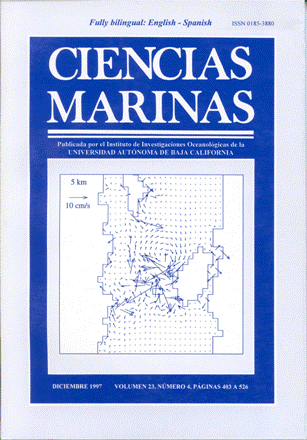Morphometric characteristics and quality of Artemia sp. cysts (Crustacea: Anostraca), living in sulphated waters in Coahuila, Mexico
Main Article Content
Abstract
The present work deals with a new population of Artemia in the Mexican Republic, located in an ecosystem of athalassohaline waters, rich in sulphate, magnesium and sodium ions. The zone of Cuatro Ciénegas in the state of Coahuila has been widely studied; however, studies on the populations of Artemia in this zone are scarce. Artemia cysts were collected from the rustic reservoirs of the Casa Blanca saltworks. The studies of the biometry of cysts, nauplii and adults and the hatch quality of the cysts were carried out under laboratory conditions. The results obtained were compared with data of other populations of interior waters and with the population of San Francisco Bay, California, USA, that has been used as referente of the Artemia franciscana species. The cysts of Cuatro Cienegas are the smallest of the varieties of Artemia of interior waters in Mexico described to date. The measurements of the hydrated cysts (230.8 ± 20.54 µm), the decapsulated cysts (221.0 ± 33.56 µm) and the nauplii (479.71 ± 54.54 µm) show that they belong in the range established for the A. franciscana species (237 ± 14.60 µm; 212.1 ± 11.30 µm and 431 ± 23.7 µm, respectively). The size of the adults of the Coahuila population is small; the females are larger than the males (6.94 ± 1.19 mm and 6.35 ± 0.47 mm) and, though these sizes are bigger than the ones established for the A. franciscana species (10.25 ± 0.89 mm and 7.08 ± 0.37 mm), one must consider that the environment influences the size of the adults. The biological information presented here may be of help in the use of this resource in the nourishment of cultivated aquatic species.
Downloads
Article Details
This is an open access article distributed under a Creative Commons Attribution 4.0 License, which allows you to share and adapt the work, as long as you give appropriate credit to the original author(s) and the source, provide a link to the Creative Commons license, and indicate if changes were made. Figures, tables and other elements in the article are included in the article’s CC BY 4.0 license, unless otherwise indicated. The journal title is protected by copyrights and not subject to this license. Full license deed can be viewed here.

